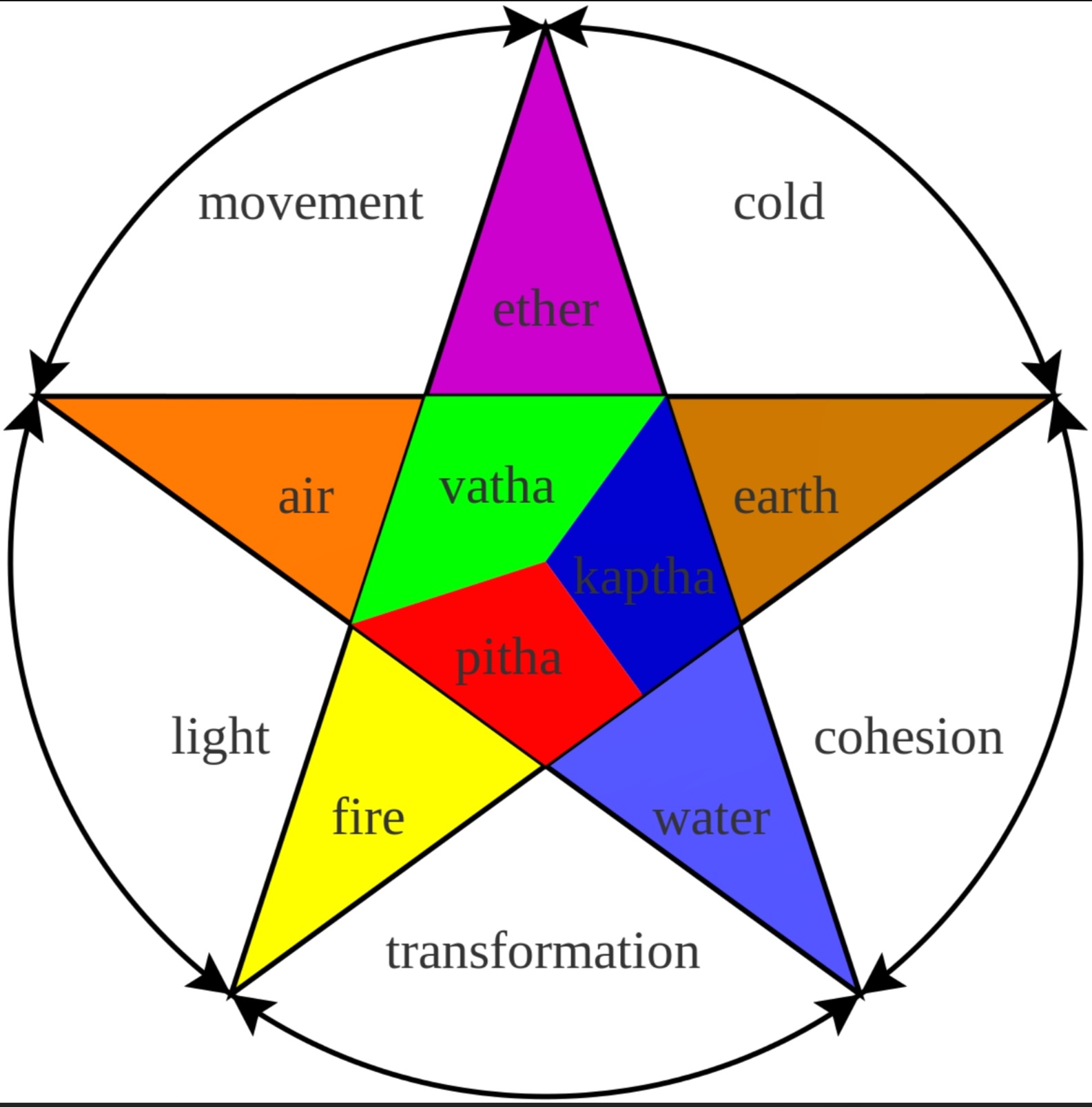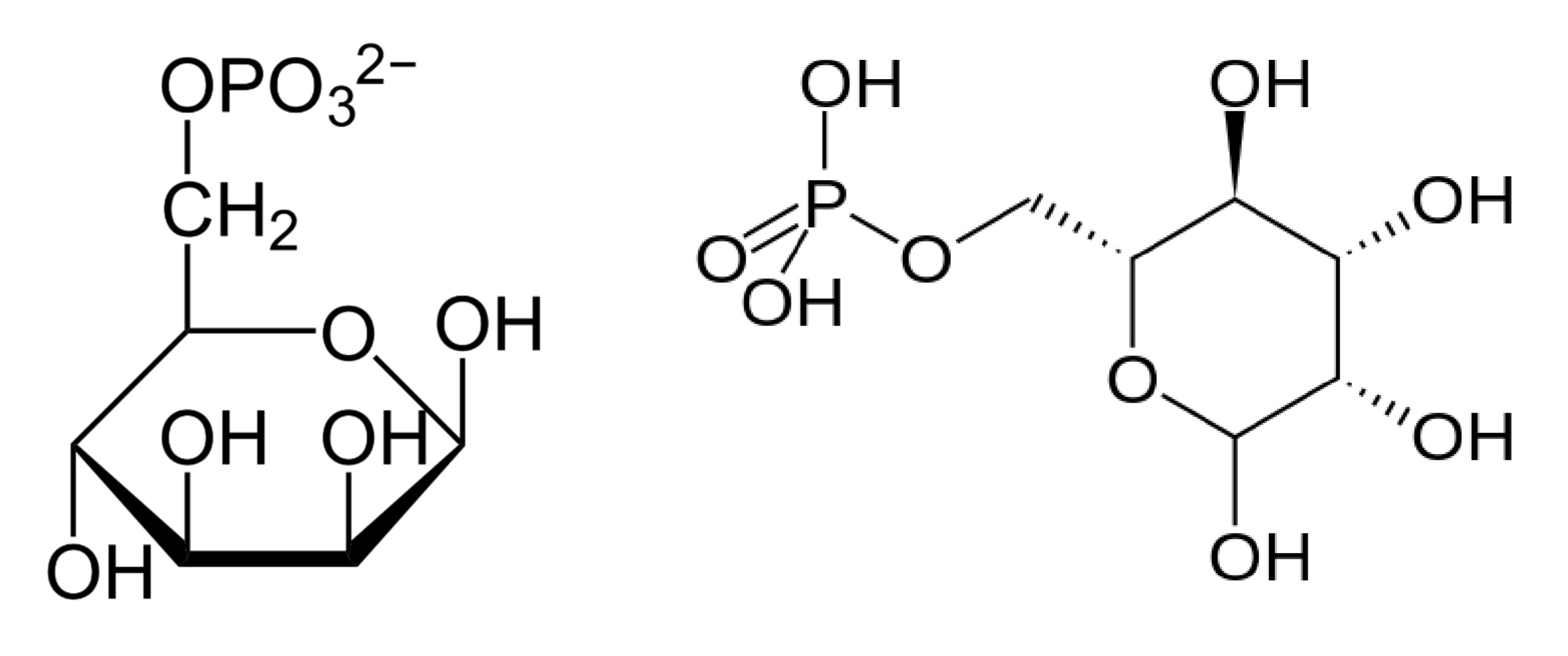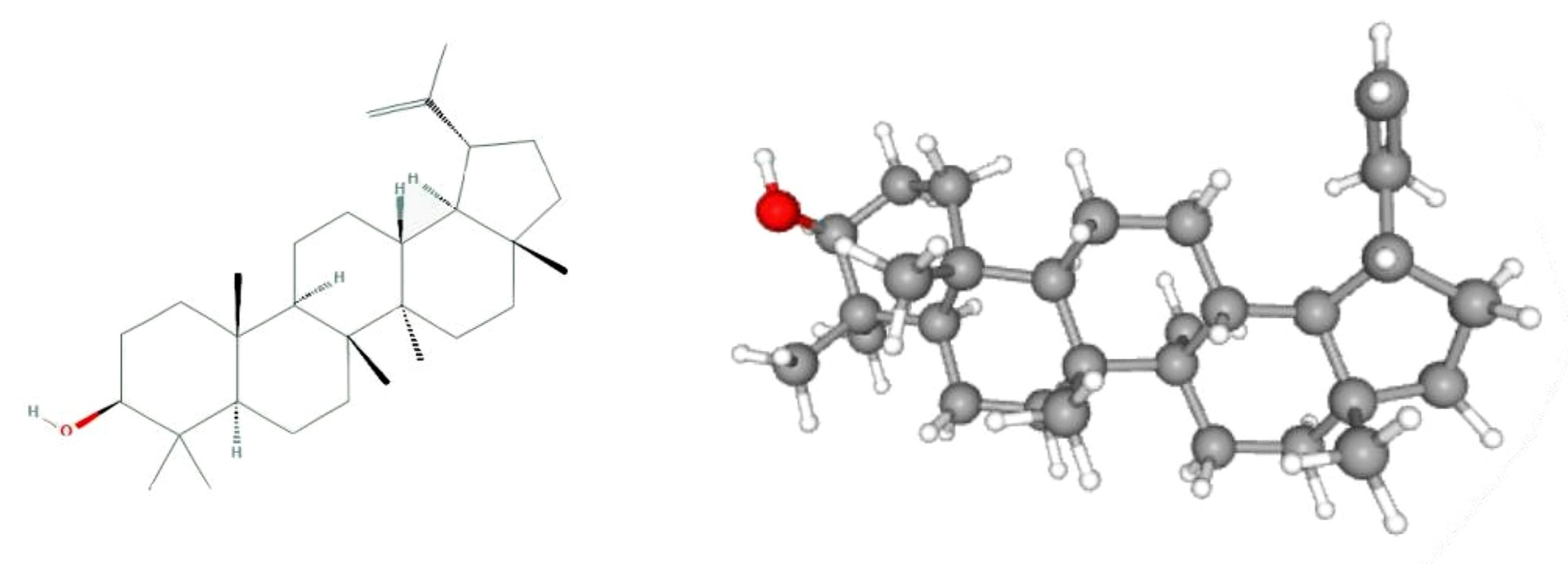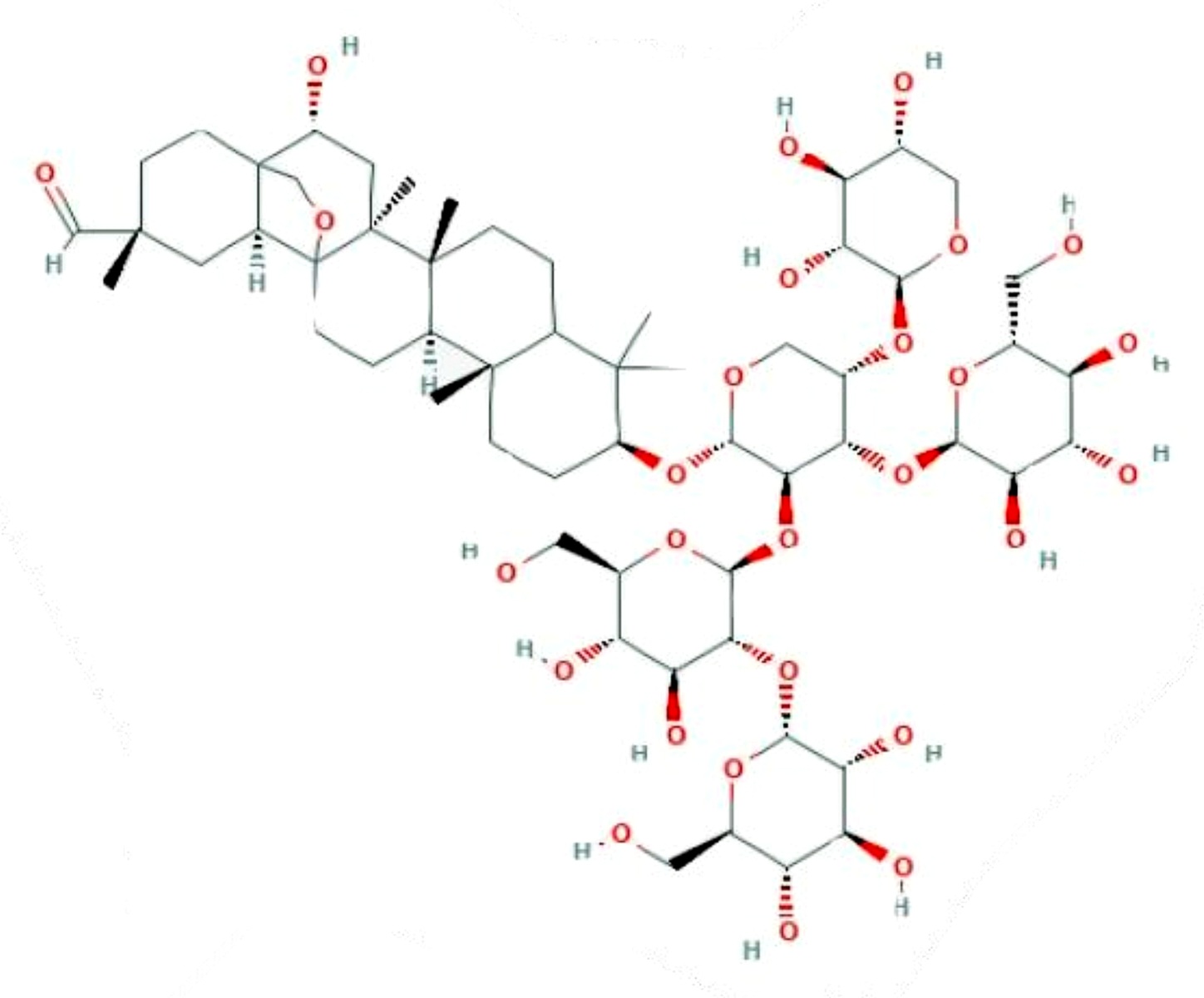The name Aloe vera derives from the Arabic word “Alloeh” meaning “shining bitter substance,” while “vera” in Latin means “true.” 2000 years ago, the Greek scientists regarded Aloe vera as the universal panacea. The Egyptians called Aloe “the plant of immortality.”
The botanical name of Aloe vera is Aloe barbadensis miller. It belongs to the Asphodelaceae (Liliaceae) family, and is a shrubby or arborescent, perennial, xerophytic, succulent, pea- green color plant. It grows mainly in the dry regions of Africa, Asia, Europe, and America. In India, it is found in Rajasthan, Andhra Pradesh, Gujarat, Maharashtra, and Tamil Nadu. [1]
This post is a continuation of 'Hazards of Disinfectants' and is the second part of my Class 12th Chemistry Investigatory Project 'Isolation, Evaluation and Analysis of Anti-Microbial Agents from Aloe vera'. It describes with the historical significance of Aloe vera and its uses in Ayurveda. The post also expands on the properties and side effects of Aloe and the reason why the plant exhibits these properties (i.e. Active Components). This condensed information is provided so as to encourage and prove that there are more holistic and sustainable methods of acquiring disinfectants from nature.
Join Weekly Health Newsletter
Every week, I will share with you information about Natural Health, Diet, Exercise, Yoga & Wellness.
HISTORY

Fig 1-1: Papyrus Eber
The first known written report of the aloe vera plant reach as far back as 6,000 years ago in ancient Egypt. Aloe was regarded as a pious plant the “blood” of which held the secrets to beauty, health, and immortality. Even the dead were embalmed with aloe vera because of its anti-microbial qualities. Its anti-inflammatory effects were written down in the “papyrus Eber” of 1,550 BC (Fig 1-1).
The earliest documentation of Aloe vera was identified on the clay boards from Nippur(Mesopotamia) which dates back as long ago as 2,200 BC. The people of this era were aware of the cleansing and soothing effect of aloe on the intestines. In this period of history, illnesses were always regarded as demonic possession of the body and only a divine plant such as aloe had the natural power to exorcise the demons.
The Japanese culture also greatly values the aloe plant, in Japan it was known as the “royal plant”, the juice was consumed as an elixir and the samurai used it for embrocation.

Fig 1-2: Ayurvedic Tridoshas
In Sanskrit, aloe vera is known as Ghrita-Kumari. Kumari means girl and it was believed that this plant supplied the energy of youth to women and had a rejuvenating effect on the female nature. In the Indian ayurvedic medicine, aloe is applied in numerous applications such as rejuvenating remedies, for menorrhoea problems and to stabilise the cardiovascular system. Aloe is regarded as the plant of balance between pitta, kapha and vata (Fig 1-2) – the aloe is one of very few plants that hold these qualities!
During the 16th century, the Indian tribes also became familiar with the aloe healing plant. Aloe was one of the 16 holy plants which were worshiped with a god like status. The diluted aloe juice that they applied to their skin worked as an insect repellent protecting them on their exhausting marches through the infested swamp areas. The Indians also used the aloe insect repellent on wood and other vulnerable materials that were likely to be damaged by insects; this treatment preserved the materials with great effect.[2]
ALOE VERA AND AYURVEDA
Medicine is an ancient art and drugs have been used as long far back as history can take us. Human life has remained dependent on plants for daily life purposes as well as medicinal uses.
Vedas are the foremost text of Hindus. Rigveda has quoted that drugs are three yuga older than gods. Vedas have given importance of drugs and classified them. Later, in Samhitas and Nighantus knowledge of drugs developed vigorously, causing detailed knowledge as well as controversies.
Kumari (or Aloe vera) is one of the non-controversial plant and extremely popular these days. It is the known drug for wound healing, burns, hepatoprotective and immunomodulator. Kumari was first described in Bhela Samhita as an ingredient of Rasna tail in Vatavyadhichikitsa.
Acharya Madhava, in his Madhava Dravya Guna, has mentioned it in Vividha Aushadhi Varga and indicated it in Yakrit roga (Liver-related disease), Pliha roga (Spleen-related disease), Kapha roga and Jwara (Fever).
In Rasa Ratna Samuchchaya, the application of the paste of Kumari juice with Jiraka (Cumin) has been indicated to pacify the burning sensation and suppuration in Lingapaka.
Ravna in Arkaprakasha has written in Netrya gana that Girikanya’s Arka(distilllation) is useful in leprosy, pain, wounds, and poisoning. He has again mentioned that Kumari is indicated in burning etc.
The properties of kumari (mentioned in Ayurveda Vigyanam) are :
Agnijanana (digestive), Pittanirharana, Balakara (strength promoter), Rechana (laxative), Garbhpatana (abortificent).
It has been indicated in constipation, Krimiroga (Worm-related intestinal infection), anxiety, epilepsy, amenorrhea, urticaria, headache, fever, spleen diseases and Mandaagni (Excessive Kapha).
ANATOMY OF ALOE VERA

Fig 3-3: Anatomy of Aloe vera
(Fig 3-3) The plant has triangular, fleshy leaves with serrated edges, yellow tubular flowers and fruits that contain numerous seeds. Each leaf is composed of three layers:
- An inner clear gel that contains 99% water and rest is made of glucomannans, amino acids, lipids, sterols, and vitamins.
- The middle layer of latex which is the bitter yellow sap and contains anthraquinones and glycosides.
- The outer thick layer of 15–20 cells called as rind which has protective function and synthesizes carbohydrates and proteins. Inside the rind are vascular bundles responsible for transportation of substances such as water (xylem) and starch (phloem). [3]
PROPERTIES AND ACTIONS
HEALING PROPERTY:
- Active compounds in aloe vera gel interact with growth factor receptors on the fibroblast, thereby stimulating its activity and proliferation, which in turn significantly increases collagen synthesis.
- Aloe gel not only increased collagen content of the wound but also changed collagen composition and increased the degree of collagen cross linking.
- Due to this, it accelerated wound contraction and increased the breaking strength of resulting scar tissue. [4]
EFFECT ON SKIN EXPOSURE TO UV & GAMMA RADIATION:
- Aloe vera gel has been reported to have a protective effect against radiation damage to the skin. [5] [6]
- It reduces the production and release of skin keratinocyte-derived immunosuppressive cytokines and hence prevents UV-induced suppression of delayed type hypersensitivity. [7]
LAXATIVE EFFECT:
- Active ingredients like anthraquinones present in latex are a potent laxative.
- It increases intestinal water content, stimulates mucus secretion, and increases intestinal peristalsis. [8]
ANTISEPTIC EFFECT:
- Aloe vera contains 6 antiseptic agents: Lupeol, salicylic acid, urea, nitrogen, cinnamomic acid, phenols, and sulphur; and have inhibitory action on fungi, bacteria, and viruses.
ANTI-VIRAL & ANTI-TUMOR ACTIVITY:
- These actions may be due to indirect or direct effects. Indirect effect is due to stimulation of the immune system and direct effect is due to anthraquinones.
- The anthraquinone aloin inactivates various enveloped viruses such as herpes simplex, varicella zoster and influenza. [9]
MOISTURIZING & ANTI-AGING EFFECT:
- Mucopolysaccharides help in binding moisture into the skin. Aloe stimulates fibroblast which produces the collagen and elastin fibres making the skin more elastic and less wrinkled.
- It also has cohesive effects on the superficial flaking epidermal cells by sticking them together, which softens the skin.
SIDE EFFECTS
TOPICAL:
- It may cause redness, burning, stinging sensation and rarely generalized dermatitis in sensitive individuals.
- Allergic reactions are mostly due to anthraquinones, such as aloin and barbaloin.
ORAL:
- Abdominal cramps, diarrhoea, red urine, hepatitis, dependency or worsening of constipation.
- Prolonged use has been reported to increase the risk of colorectal cancer.oLaxative effect may cause electrolyte imbalances (low potassium levels)
PREGNANCY & BREASTFEEDING:
- Oral aloe is not recommended during pregnancy due to theoretical stimulation of uterine contractions.
- In breastfeeding mothers, it may sometime cause gastrointestinal distress in the nursing infant.
Thus, though Aloe vera has wide spectrum of the properties and uses, some of them could be myths and some of them could be the truth. In future, controlled studies are required to prove the effectiveness of Aloe vera under various conditions.
ACTIVE COMPOUNDS IN ALOE
Any component that provides pharmacological activity or other direct effect in the diagnosis, cure, mitigation, treatment, or prevention of disease, or affects the structure or any function of the body of man or animals.[10]
Aloe vera contains 75 potentially active compounds like: [11]
VITAMINS:

Fig 6.1-4: Vitamin structures
- It contains vitamins A (beta-carotene), C and E, which are antioxidants. It also contains vitamin B12, folic acid, and choline.
- Function - Neutralizes free radicals.
ENZYMES:
- It contains 8 enzymes: aliiase, alkaline phosphatase, amylase, bradykinase, carboxypeptidase, catalase, cellulase, lipase, and peroxidase.
- Functions -
- Bradykinase helps to reduce excessive inflammation when applied to the skin topically
- Others help in the breakdown of sugars and fats.
MINERALS:
- It provides calcium, chromium, copper, selenium, magnesium, manganese, potassium, sodium, and zinc.
- Functions - They are essential for the proper functioning of various enzyme systems in different metabolic pathways and few are antioxidants.
SUGARS:

Fig 6.4-5: Mannose-6-phosphate
- It provides monosaccharides (glucose and fructose) and polysaccharides: (glucomannans/polymannose).
- These are derived from the mucilage layer of the plant and are known as mucopolysaccharides.
- The most prominent monosaccharide is mannose-6-phosphate (Fig 6.4-5), and the most common polysaccharides are called glucomannans.
ANTHRAQUINONES:
- It provides 12 anthraquinones, which are phenolic compounds traditionally known as laxatives.
- Function – Aloin and emodin act as analgesics, antibacterials and antivirals.
FATTY ACIDS:
- It provides 4 plant steroids: cholesterol, campesterol, β-sisosterol and lupeol.
- Function - All these have anti-inflammatory action and lupeol also possesses antiseptic and analgesic properties.
HORMONES:
- Auxins and gibberellins that help in wound healing and have anti-inflammatory action.
OTHERS:

Fig 6.8-6: Lignin
- It provides 20 of the 22-human required amino acids and 7 of the 8 essential amino acids.
- It also contains salicylic acid that possesses anti-inflammatory and antibacterial properties.
- Lignin (Fig 6.8-6), an inert substance, enhances penetrative effect of the other ingredients into the skin.
- Saponins that are the soapy substances form about 3% of the gel and have cleansing and antiseptic properties.
ANTIMICROBIAL ACTIVITY OF ACTIVE COMPOUNDS
There are mentions of many compounds with anti-bacterial anti-viral and anti-septic properties in the topic above. Some examples are Aloin, Emodin, Lupeol, Salicylic acid and Saponins. Following is a brief about their properties.
ALOIN & ALOE EMODIN [ANTHRAQUINONE]:

Fig 7.1-8 : Structure of Aloin and Aloe Emodin
Aloin is a bitter yellow brown coloured compound noted in the exudate of many Aloe species. Aloin, extracted from natural sources, is a mix of two diastereomers; namely, Aloin A (Barbaloin) [12] and Aloin B (Isobarbaloin), with both having similar chemical properties. (Fig 7.1-8) It increases peristaltic movements in the colon, inducing bowel movements. It also prevents the colon from reabsorbing water, resulting is softer stools.
Aloe Emodin, one of many types of Emodin, is also found in the exudate of many Aloe species.

Fig 7.1-7 : Activity of Aloin and Aloe Emodin
In a joint research by Institute of Environmental and Agricultural Chemistry, Università Cattolica del Sacro Cuore, Italy; Department of Crop Science, Breeding and Plant Medicine, Mendel University in Czech Republic; & Department of Agrochemistry, Soil Science, Microbiology and Plant Nutrition, Mendel University in Czech Republic; an observation was made that Aloin and aloe emodin mostly act on gram positive bacteria. (Tab 7.1-7) [13]
The pure aloin standard solution was the most effective against B. licheniformis, while S. boulardii was the least affected microorganism. Pure aloe emodin standard solution reduced the growth of B. licheniformis. [13]
The standard solution of aloin showed a middle or lower effect against all microorganisms and, except S. boulardii, with the antibacterial activity increasing with time. The standard solution of aloe emodin had a stronger effect than the previous and showed fluctuating activity against B. licheniformis, S. boulardii, and S. epidermidis, first increasing, plummeting, and then increasing again. [13]
LUPEOL [FATTY ACID]:

Fig 7.2-9 : Structure of Lupeol
(Fig 7.2-9) Lupeol, naturally found in mango, pepper, cucumber, strawberry, red grapes, and Aloe species, has complex pharmacological activities. It is displaying antiprotozoal, antimicrobial, anti-inflammatory, anti-tumor, and chemo preventive properties. [14]
SALICYLIC ACIDS:

Fig 7.3-10 : Structure of Salicylic acid
(Fig 7.3-10) Salicylic acid is lipophilic mono-hydroxy benzoic acid and is also a ß-hydroxy acid. It is a colourless crystalline organic acid and is called as the safest and most effective medicines needed in a health care system - bye WHO’s List of Essential Medicines. [15]
Salicylic acid as a medication is used most to help remove the outer layer of the skin. Bismuth subsalicylate is used as stomach relief aid and is a salt of bismuth and salicylic acid. It is. Also used as food preservative, a bactericidal and an antiseptic. [16]
SAPONINS:

Fig 7.4-11 : Structure of Saponins
(Fig 7.4-11) Saponins are phytochemicals which can be found in most vegetables, beans, and herbs. The best-known sources of saponins are peas, soybeans, and some herbs. They are soapy substances and have cleansing and antiseptic properties.
REFERENCES
[1] Surjushe, A., Vasani, R., & Saale, D.G. (2008). Aloe vera: A Short Review. Indian Journal of Dermatology. 53:163-6
[2] Medicinal plants of ancient (n.d.). Aloe Medical Group International. Retrieved June 13 2020 from https://www.aloe-medical-group.com/en/aloe-vera/history.html
[3] Tyler V. The honest herbal: A sensible guide to the use of herbs and related remedies. 3rd ed. Binghamton, New York: Pharmaceutical Products Press; 1993.
[4] Heggers JP, Kucukcelebi A, Listengarten D, Stabenau J, Ko F, Broemeling LD, Robson MC, Winters WD J Altern Complement Med. 1996 Summer; 2(2):271-7.
[5] Roberts DB, Travis EL Int J Radiat Oncol Biol Phys. 1995 Jul 15; 32(4):1047-52.
[6] Sato Y, Ohta S, Shinoda M Yakugaku Zasshi. 1990 Nov; 110(11):876-84.
[7] Byeon SW, Pelley RP, Ullrich SE, Waller TA, Bucana CD, Strickland FM J Invest Dermatol. 1998 May; 110(5):811-7.
[8] Ishii Y, Tanizawa H, Takino Y Biol Pharm Bull. 1994 May; 17(5):651-3.
[9] Sydiskis RJ, Owen DG, Lohr JL, Rosler KH, Blomster RN Antimicrob Agents Chemother. 1991 Dec; 35(12):2463-6.
[10] active ingredient. (n.d.) Medical Dictionary for the Health Professions and Nursing. (2012). Retrieved June 13 2020 from https://medical-dictionary.thefreedictionary.com
[11] Amar Surjushe, Resham Vasani, D G Saple. Aloe vera: A Short Review. Indian J Dermatol. 2008; 53(4): 163–166. doi:10.4103/0019-5154.44785
[12] Reynolds T, ed. (January 2004). Aloes: the genus Aloe. CRC press.
[13] Pellizzoni, M., Ruzickova, G., Kalhotka, L. and Lucini, L. Antimicrobial activity of different Aloe barbadensis Mill. and Aloe arborescens Mill. leaf fractions. Journal of Medicinal Plants Research Vol. 6(10), pp. 1975-1981, 16 March 2012
[14] Margareth B. C. Gallo; Miranda J. Sarachine (2009). "Biological activities of Lupeol" (PDF). International Journal of Biomedical and Pharmaceutical Sciences. 3 (Special Issue 1): 46–66.
[15] World Health Organization (2019). World Health Organization model list of essential medicines: 21st list 2019. Geneva: World Health Organization.
[16] "Definition of Salicylic acid". Retrieved from MedicineNet.com.
Join Weekly Health Newsletter
Every week, I will share with you information about Natural Health, Diet, Exercise, Yoga & Wellness.

0 comments